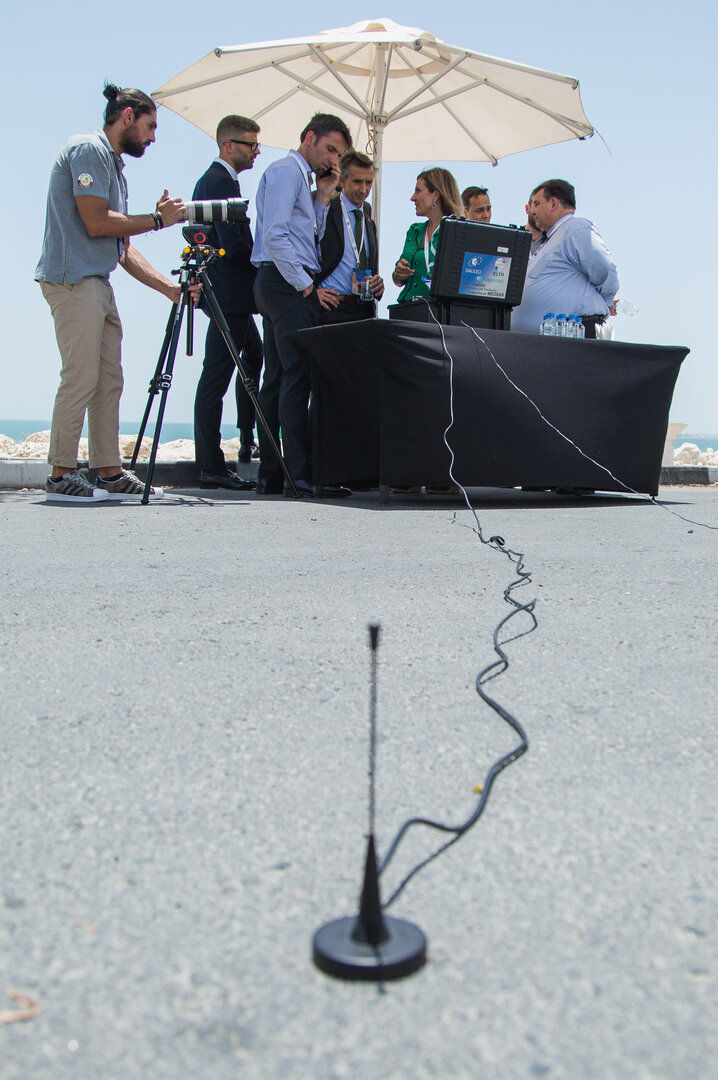Galileo Return Link Service replies to SOS messages worldwide
by Alun WilliamsThe Galileo Return Link Service, which allows people in distress to receive automatic acknowledgement that their signal has been received, is now live.

It was declared operational at the recent 12th European Space Conference, which took place in the Egmont Palace in Brussels on 21 January.
It is estimated that the Galileo satellite constellation contributes to saving around 2,000 lives annually by relaying SOS messages to first responders. From now on the satellites will reply to these messages, helping to reassure the people in danger that help is on the way.
RLS
The Galileo Return Link Service (RLS) will be a free-of-charge global service available to Cospas-Sarsat RLS compatible beacons. The new functionality enables a communication link that relays Return Link Messages (RLM) back to the originating beacon through the Galileo Navigation Signal in Space (I/NAV E1).
“Anyone in trouble will now receive solid confirmation, through an indication on their activated beacon, informing them that search and rescue services have been informed of their alert and location,” explains ESA’s Galileo principal search and rescue engineer Igor Stojkovic. “For anyone in a tough situation, such knowledge could make a big difference.”
Cospas-Sarsat
The RLS is a joint effort supported by both the existing Cospas-Sarsat system and a new Galileo Service Facility called the Return Link Service Provider (RLSP).
The RLSP is in charge of securely providing the ground segment interface between the French Mission Control Centre and the Galileo core infrastructure, says the GSA (European Global Navigation Satellite Systems Agency), enabling the transmission of RLM requests to Galileo satellites in view of the beacon.
“The GSA, as the Galileo Search and Rescue Service Authority, has contributed tremendously to the development of the Return Link,” said GSA Executive Director Carlo des Dorides. “The GSA has also supported the development of Galileo Return Link-enabled beacons in recent years. Today, there are several beacon manufacturers worldwide ready to sell Galileo SAR Return Link-compatible beacons, including 5 in Europe.”
The end-to-end RLM delivery time is expected to be about 10 minutes, but in some cases it may take longer, possibly up to 30 minutes from the moment the beacon is activated until the notification is sent via the Galileo Signal in Space.
“Today with its unique differentiator, Galileo SAR is demonstrating how Europe is at the forefront of high technology for the good of European citizens,” said Thierry Breton, European Commissioner for the Internal Market.
“This wouldn’t have been possible without the strong support of the international community – Cospas-Sarsat, CNES, the International Maritime Organization and the International Civil Aviation Organization – and the main beacon manufacturers, all of which have contributed to the provision of an end-to-end solution for people in distress.”
History
For context, a Return Link capability was first introduced by the Galileo Programme back in 2005. In 2008, the Return Link Service was adopted in the Cospas-Sarsat Strategic Plan, with a dedicated transmission protocol for Return Link-enabled beacons established in 2010. This was successfully verified during the Galileo In-Orbit Validation Phase in 2013.
Finally, in 2019, deployment of the required infrastructure was completed and the Return Link Service underwent a thorough System and Service validation that concluded in November 2019.
A key milestone, says GSA, was a public demonstration of the return link service carried out at the Cospas-Sarsat Joint Committee Meeting in Doha in Qatar last summer (pictured, above).
Image: ESA – Return Link test in Doha